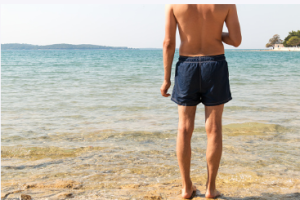The swimsuit is an item of clothing intended for activities related to water. These activities may involve sunbathing or water sports. There are many different swimsuits for men, women, and children. It is important to choose the right type for your body type. Learn about different styles, fabrics, and types of swimsuits.
Styles
 There are many different styles of men’s swimwear. Some styles are traditional, and some are modern. Trunks, for instance, have been around for almost a century. However, men in South America and Europe tend to wear tighter-fitting swimwear. This type of swimwear allows for a full-shoulder tan.
There are many different styles of men’s swimwear. Some styles are traditional, and some are modern. Trunks, for instance, have been around for almost a century. However, men in South America and Europe tend to wear tighter-fitting swimwear. This type of swimwear allows for a full-shoulder tan.
Whether going on holiday, hitting the pool, or just topping off your tan, wearing swimwear is the ultimate fun experience. For this reason, it’s essential to wear something that you can show off – a bold colour or a sexy show-stopper is always a winner. Trying something a little out of your usual style can also give you a boost of confidence.
Whether you are looking for a one-piece swimsuit or a bikini, there’s a style for you. Swim trunks are a little more conservative than swim briefs but still have a lot of coverage and are a great choice for swimming. These are also good for scuba diving, surfing, and wakeboarding.
There are many different cuts and styles of swim shorts, and it can take time to know which is best for you. Luckily, there are many trends to help simplify your search. Start by choosing a back style: an open or closed back style. Then, you can choose a swimsuit cut based on what looks best.
One-piece swimsuits come with different types of straps. Classic one-pieces have two straps that cross in an “X” shape or parallel. Another popular style is the racerback swimsuit. While the racerback style is often reserved for water sports enthusiasts, strapless one-shoulder swimsuits are becoming increasingly popular.
Fabrics
Recycled fabrics are another alternative for swimwear. One company, REPREVE, makes swimwear fabrics from recycled plastic bottles. The demand for recycled materials is growing, and the industry is working to meet these demands. The swimming industry continues to evolve, and new fabrics are being tested and introduced.
The main fabric for swimsuits is polyester. This fabric is lightweight and has good stretch properties. The fabric can be very soft and durable if blended with elastane. A polyester/elastane blend is resistant to chlorine and provides UV protection. Another fabric that is suitable for swimwear is velvet. Velvet is an extremely soft and luxurious fabric commonly used in loungewear and robes. The material has a pile, which gives it a velvet-like feel. With the right blend, swimwear can look opulent.
The next fabric choice for your swimsuit is a stretchy synthetic material. These fabrics are made from a blend of polyester or nylon and elastane, and they are durable, quick-drying and resistant to UV rays and chlorine. Stretchy fabric is ideal for swimming and a good option for summer.
Nylon is a synthetic material that can resist UV rays. The material is also highly breathable. In addition, the material is quick-drying and can be used to make fashion swimwear. This material is often combined with elastane to make it more figure-hugging. Nylon swimwear is a favourite for summer wear, whether for the beach or a swimming pool.
Wetsuits
A wetsuit is a type of swim shorts that prevents you from overheating while swimming. This suit contains a closed-cell foam made of neoprene that conducts heat away from the body through pure thermal diffusion. Water’s thermal conductivity is higher than still air, and an unprotected swimmer can quickly develop hypothermia.
It is vital to find a wetsuit that fits you correctly. If it is too tight, it will restrict the flexibility of the arms and legs. A wetsuit should fit well and allow you to perform arm strokes easily. The wrists and neckline of the wetsuit should be flush against your body. You should also find a wetsuit that does not cut off your circulation.
Another benefit of a wetsuit is that it offers extra buoyancy. It can be helpful for swimmers who are weak or new to the sport. The thick rubber shell also protects swimmers from cuts and marine life. However, wetsuits can be very expensive – costing between $100 and $1000!
Wetsuits come in different types and ranges, depending on the climate and the type of activity you intend to pursue. The top-range suits are best for competitive swimming and triathlons, while the mid-range suits are recommended for training in cooler conditions. In addition, they usually feature better specifications than the cheaper brands, giving competitive swimmers an edge over competitors.